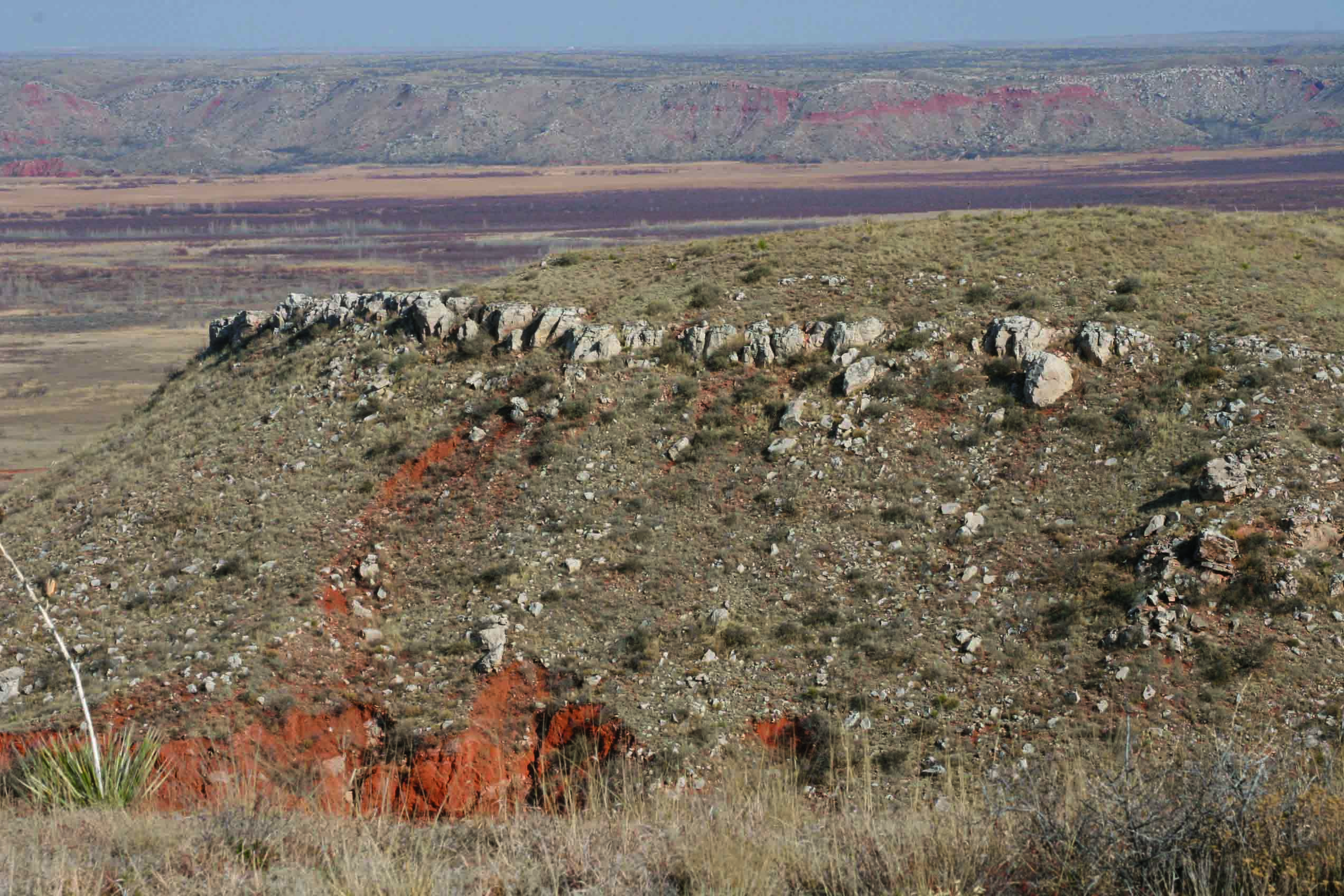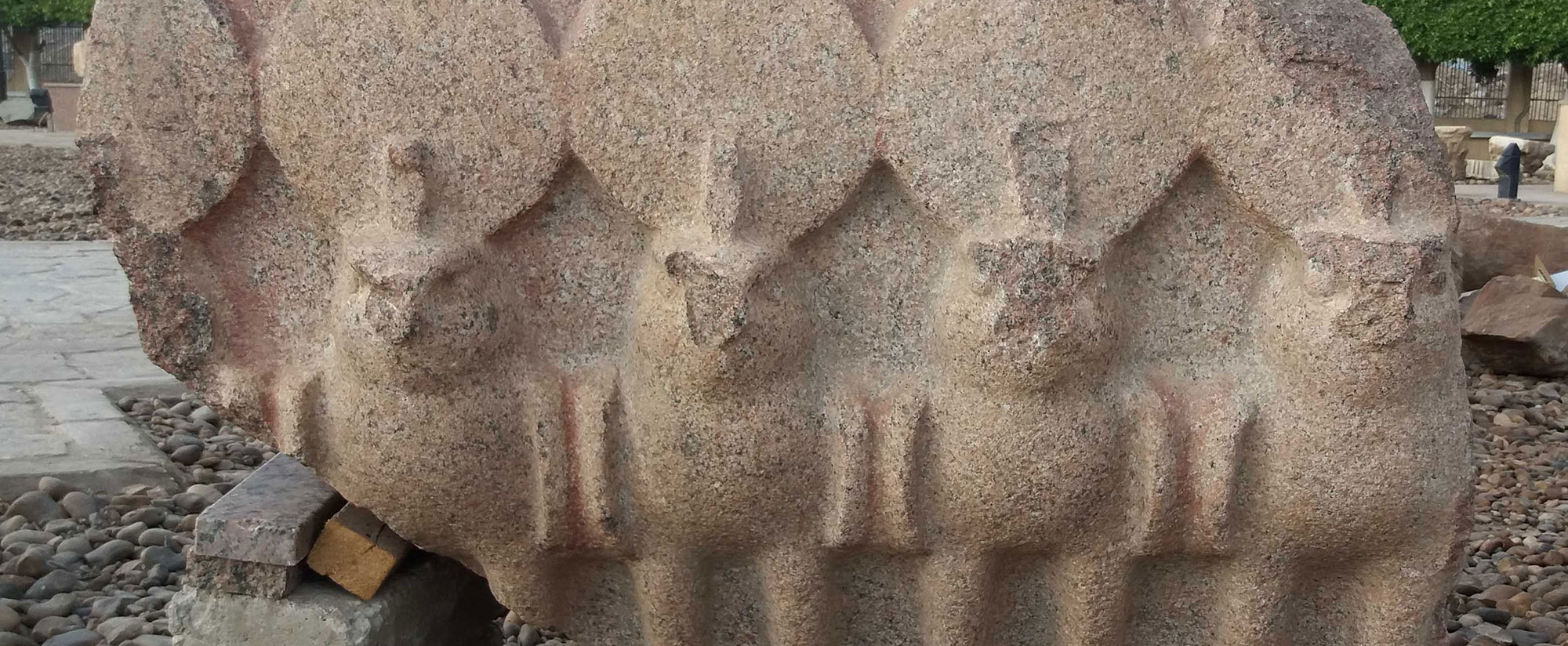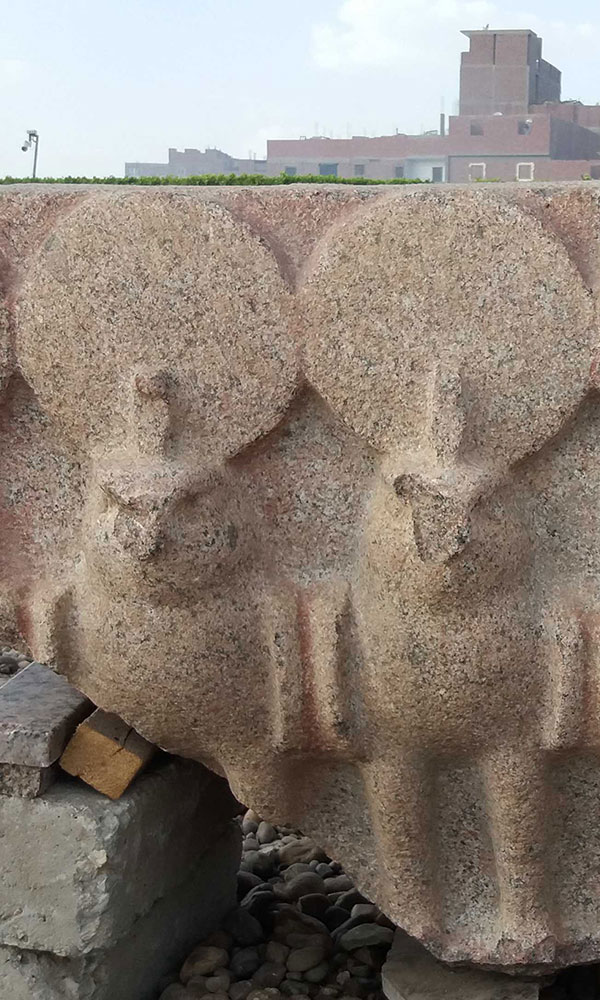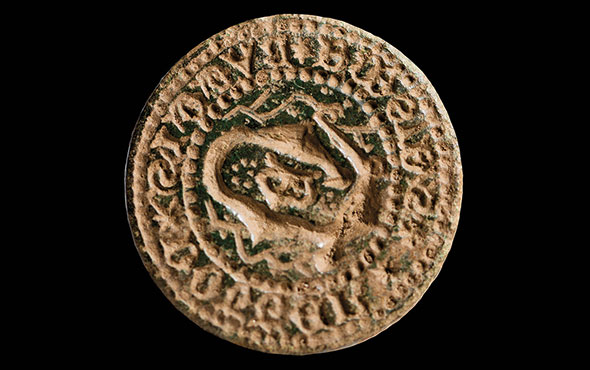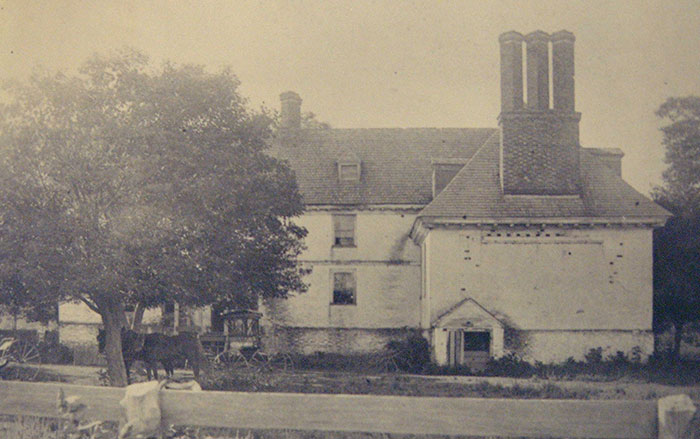
During the summer roundup, rancher Bob Macy doesn’t saddle up a horse to move his cattle into the pens next to Macy Ranch headquarters, a collection of a dozen low-slung buildings some 30 miles southeast of Lubbock, Texas. He is much more likely to wrangle his herd from his Bell JetRanger helicopter, which he pilots with the same calm assuredness of a cowboy who has spent decades in the saddle. A descendant of the legendary cattleman John Slaughter, Macy runs one of four ranches that comprise the former U-Lazy-S Ranch, which covered 83,000 acres straddling the edge of the Llano Estacado, or “staked plains,” one of the largest mesas in North America. Before Slaughter bought the spread in 1902, it was known as the Square and Compass Ranch, and was one of the earliest cattle ranches in the southern High Plains. Today the region is dominated by rows of gleaming 30-story-tall wind turbines, massive green cotton fields, and continuously pumping oil rigs.
The view from Macy’s helicopter as he takes off from ranch headquarters features the far-off turbines and vast modern farms of the Texas Panhandle. As he pilots his craft over the 300-foot-tall cliffs known as the Caprock Escarpment that divide the level plains of the Llano Estacado from the rugged rolling plains below, he begins to point out sections of the ranch that formed the backdrop to events that played out long before the area became a reliable engine of the modern Texas economy. As he speeds the helicopter along the perimeter of the former U-Lazy-S Ranch, he explains that this rugged landscape conceals a network of sites and artifacts left behind by Native Americans, buffalo hunters, and early cowboys, whose stories are the raw material that forged the most iconic imagery of the American West. With Macy’s support, a team of archaeologists from the Lubbock Lake Landmark, a unit of the Museum of Texas Tech University, is now surveying and unearthing the remains these people left behind. “What we have here is a unique opportunity to explore the history of a single cattle ranch,” says archaeologist Eileen Johnson, director of the Lubbock Lake Landmark. “But it also helps us understand the larger narrative of how people lived here in the southern High Plains.”
Since 2005, the team, led by archaeologist Stance Hurst, has surveyed hundreds of acres on the Macy Ranch and the other ranches that make up the former U-Lazy-S. Among the many sites they have found are Apache and Comanche encampments, shelters where buffalo hunters took refuge during harsh winters, and even a camp made by nineteenth-century Square and Compass cowboys. “You can’t look at any one of these historical eras in isolation,” says Hurst. “We have a chance to see how they work together, how waves of different people occupied this landscape.”

These disparate periods in the ranch’s history are memorialized by a series of rock art panels at Cowhead Mesa, an isolated, 100-foot-tall section of the Llano Estacado about five miles south of Macy Ranch headquarters. Here, the people who once called the southern High Plains home used the sandstone outcropping of the mesa as a canvas to record important moments. “The panels at Cowhead Mesa are a kind of map to the history of this landscape,” says Hurst. Sometime in the late seventeenth or early eighteenth century, nomadic Native Americans, probably Apache, engraved petroglyphs here that seem to describe a dramatic historic event. They show two buildings topped with crosses—resembling Spanish colonial churches—one of which has been set on fire, along with stylized human figures that may represent priests. Hurst, who has studied the panels extensively, says these are likely depictions of Spanish missions in nearby New Mexico that were set aflame during the 1680 Pueblo Revolt (See “The First American Revolution”). The Apache are known to have regularly interacted with the Pueblo communities who rebelled against Spanish rule, and may have chronicled this event with these rock art figures.
Nearby are images probably engraved sometime between the mid-1700s and the 1870s, when the Comanche dominated the southern Plains, including what became the Texas Panhandle. These depict buffalo, tepees, horses and riders, and figures fighting with weapons, all in a stylized form associated with Comanche artists. Once the Comanche were confined to reservations in nearby Oklahoma, the Anglo-Americans who flocked to the area couldn’t resist adding their own individual stamps to Cowhead Mesa. Near Comanche figures, a cowboy inscribed a Masonic symbol that was the Square and Compass Ranch’s cattle brand from the early 1880s until the ranch became the U-Lazy-S in 1902. A cowboy named R. Knolles also engraved his signature here in careful, neat handwriting next to the date 1881. And, in 1955, a proud Texan carved into the mesa’s limestone the boast that he had killed “4 CYOTES and 2 LOBO WOLFS” followed by the words “LONG LIVE TEXAS.”
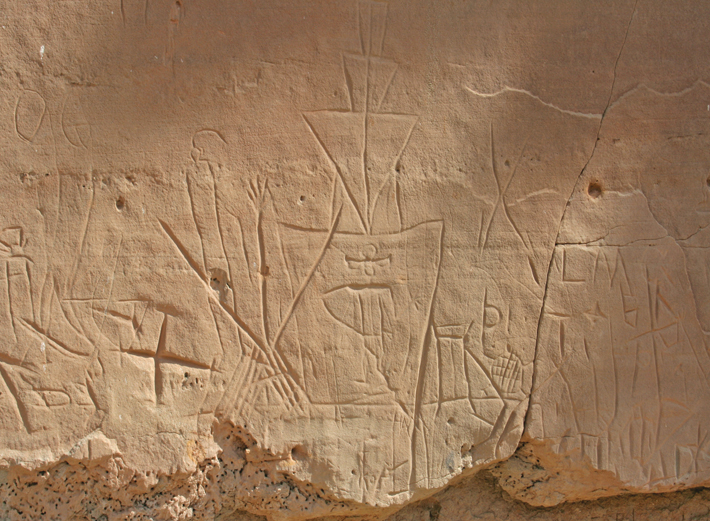
Cowhead Mesa wasn’t just a convenient, dramatically positioned canvas. People were also drawn to the easily defended top of the mesa. Here, Hurst and his team discovered a hearth that radiocarbon dating shows warmed an Apache band sometime after the fifteenth century, when groups of Apache first reached the southern High Plains after migrating from their homeland in present-day Canada. Some seven miles from the Macy Ranch headquarters, above a seasonal stream known as Spring Creek, Museum of Texas Tech University research associate Doug Cunningham identified the remains of an encampment that might have been occupied over many years. Excavation here revealed hearths, stone tools, and pottery that were the telltale signs of a large, seasonal Apache camp. Perched on the Caprock Escarpment, the site would have given the Apache access to both the resources of the Llano Estacado and the rolling plains that lie below the escarpment.
The arrival of Spanish horses on the High Plains in the seventeenth century helped the Apache dramatically increase their range, but it also led to the arrival of the Comanche, a nomadic people whose equine mastery allowed them to sweep into the southern High Plains from their homelands in Colorado and quickly displace the Apache, who were driven south and west.
While on survey with Hurst on a section of the Caprock Escarpment known as Buffalo Point, Cunningham discovered an isolated example of a metal arrowhead very likely fashioned by a Comanche warrior from scrap metal. And at another site on property neighboring the Macy Ranch, the team located traces of a small Comanche hunting camp. Here, they found five metal arrowheads and three copper bracelets. These simple copper bands were likely worn by Comanche women or used for trading. “We know from the State of Texas government inventories that trading posts kept strings of copper to trade with the Comanche,” says Hurst. “They were clearly a desirable commodity.”
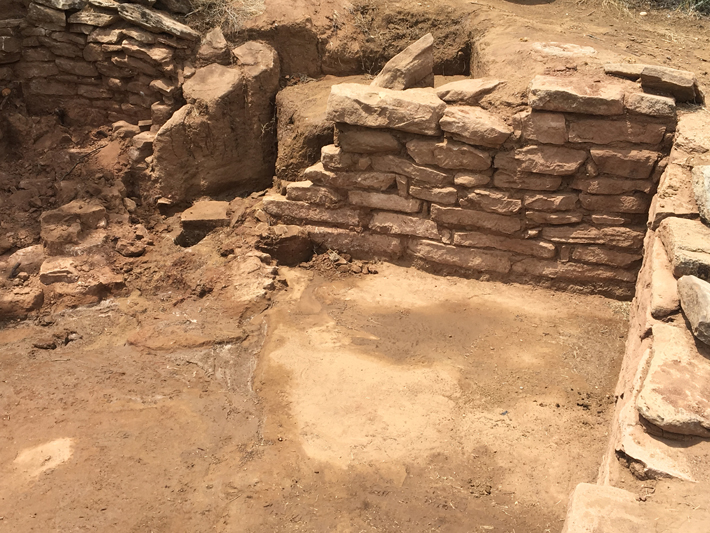
During the eighteenth and nineteenth centuries, people from the Spanish—and later Mexican—territory to the west ventured into the grasslands of the High Plains to trade with the Comanche. The pastores, shepherds of neighboring New Mexico, took their flocks into the High Plains to graze. Since wealthy landowners monopolized grazing land in central New Mexico, less well-off shepherds turned to the vast grasslands of Texas, Oklahoma, and Colorado to sustain their flocks. Hurst believes that stone corrals he and his team have discovered in the southeast section of the former U-Lazy-S Ranch may have served as sheep pens at a seasonal outpost used by a group of pastores. “I think it is very likely this site dates to the nineteenth century and that the pastores were there,” says Hurst. “There’s probably not much physical evidence left. These were people who were walking from New Mexico, so they didn’t carry much with them.” But the corrals serve as a reminder that people as different as the Comanche and the pastores could share the landscape.
By 1874, the U.S. Army had forced most Comanche onto reservations in Oklahoma, leaving the plains open for groups of buffalo hunters who inaugurated a years-long slaughter that resulted in the almost complete eradication of these animals from the High Plains. While surveying the ranch by helicopter in 2012, Macy and Cunningham spied the remains of a chimney at a previously unknown site. Hurst and his team later identified two buildings here that were built by the Woody brothers, freelance buffalo hunters whose stories were recorded by scholars in the early twentieth century. Lying near the bottom of the Caprock Escarpment, in an alcove sheltered from the wind, Hurst and his team unearthed two “half-dugouts,” shelters with stone chimneys and floors dug into the ground that were likely covered with tarps and earth to serve as winter headquarters for the Woody brothers. Here, the team has found .50-caliber Sharps Rifle cartridges. These cartridges were produced beginning in 1872 specifically for buffalo hunting. At least one button belonging to a Union regiment uniform has been unearthed at one of the dugouts, suggesting the hunters may have also been outfitted with Civil War–era surplus military gear.
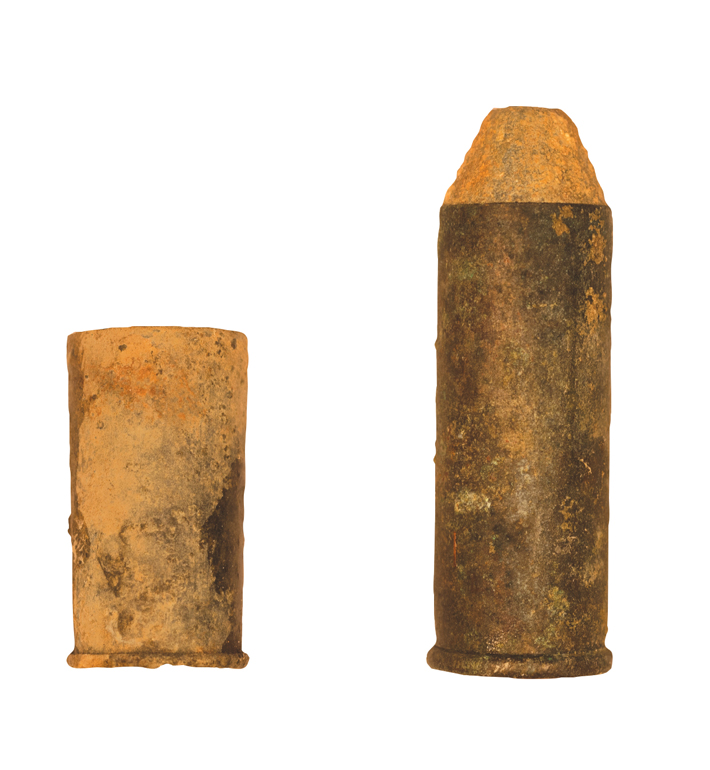
The last of the buffalo in this area were hunted out by about 1880, at which point ranchers began to move into the grasslands of the Texas Panhandle. In the summer of 2018, the Lubbock Lake Landmark team was surprised to discover a cattle brand lying near one of the half-dugouts. It belonged to the Lindsay brothers, early cattle ranchers who worked the open ranges before the introduction of barbed wire fencing on the High Plains. The brand, together with the presence of Square and Compass Ranch fencing close to the shelters, has led the team to speculate that the shelters were initially built and occupied by buffalo hunters led by the Woody brothers, then used by cowboys working for the Lindsay brothers, and finally by Square and Compass Ranch hands. “It’s likely that some of the ranch hands were former buffalo hunters,” says Hurst. “The end of the buffalo hunting era didn’t mean the buffalo hunters disappeared. Some probably stayed on and took the only work they could get, which would have been working for the ranchers.”
Though early cattle ranching was critical to the development of the United States, its physical footprint is ephemeral and often overlooked by archaeologists. And as is the case with most early ranches in the High Plains, little survives today of the Square and Compass. But near the banks of one of the ranch’s many seasonal creeks, Hurst and his team have discovered a site that offers a rare glimpse of a single season of a ranch in the southern High Plains.
While recording a prehistoric site in 2008 that lies some five miles northwest of the Macy Ranch headquarters, the team discovered a nineteenth-century metal fork in a gully nearby. They decided to use metal detectors to survey the edge of the gully. “It was pretty amazing,” says Hurst. “It was immediately apparent there was a high concentration of artifacts there.” Eventually, the team unearthed such classic cowboy equipment as a coffee mill and a coffee pot, along with eating utensils, buttons, and horseshoes. They also discovered traces of barbless metal wire, or slick wire, embedded in juniper trees not far from the cluster of artifacts. Puzzled, they asked ranch owner Bob Macy for his opinion. “There was no question in my mind,” says Macy. “We use slick wire today when we want to corral horses.” The wires were traces of a temporary horse corral. And the artifacts themselves were clustered in such a tight concentration because they had been dropped around a chuck wagon. What the archaeologists had found was evidence of a seasonal roundup camp, a temporary camp pitched by cowboys as they gathered the cattle together. The artifacts had accumulated over the course of a few days or a week when groups of cowboys gathered around the chuck wagon for chow after a long day’s work on the range, and then bedded down there for the night. “What we have is the remains of a camp that was in all likelihood used only once by the Square and Compass cowboys,” says Hurst.

Not far from the chuck wagon artifacts, on the edge of the gully, the team found a large concentration of .45 Long Colt and .44 Smith & Wesson American cartridges. “At first I thought, ‘There was a gunfight here!’” says Hurst. But across the ravine from the cartridges, Cunningham found bullets that matched the cartridges, as well as scattered fragments that likely came from glass bottles. “It wasn’t a shootout,” he says. “These cowboys were practicing their aim, using the bottles for target practice.” The sheer number of cartridges and bullets—more than 200 have been found thus far, and many more likely still lie beneath the soil—suggests this may not have been just a couple of cowboys keeping their aim sharp. “We think this was more of a contest,” says Hurst. He points out that in the nineteenth century, cowboys on roundup were known to have competed against each other in contests of shooting, roping cattle, and other tricks of the trade. “These really were the precursors to the rodeos you can go to today,” says Hurst. “We’re looking at a cowboy tradition that turned into something we still celebrate.”

After an hour in the air, Bob Macy has outlined his ranch’s long history and hovered above most of the sites that the Lubbock Lake Landmark team has excavated. He pilots his helicopter back over the Caprock Escarpment to the ranch headquarters. But one nineteenth-century site had escaped view from the air, and is even difficult to see from the ground. It dates to the period when, despite the Square and Compass Ranch’s domination of this landscape, a single family put down roots on the edge of the Llano Estacado, claiming several acres for their own.
While surveying the far northwest corner of the Macy Ranch, Cunningham had found the remains of a stove and other artifacts that were probably from a small residential site. Eventually, the team found a depression that indicated a dugout dwelling, as well as a dirt embankment that probably shored up a later timber house. No descendants of John Slaughter had a memory of a home in that part of a ranch, so Hurst and his team looked up the site in the records of the Texas General Land Office. They found that, thanks to the terms of the state’s often-confusing homestead laws, a family named Maxey had been able to work a farmstead inside the ranch boundaries from the 1880s until the early 1900s.
The Maxeys’ presence inside the ranch may have been a source of frustration to the ranchers. Indeed, the family eventually sold their homestead to the U-Lazy-S, and they may have been pressured to do so. They then moved to a now-derelict house they built some five miles from the ranch, which Hurst was able to track down. Its distinguishing feature is a collection of colorful stones embedded in its cement mortar. When he saw it, Hurst immediately thought of two enigmatic collections of stones the archaeologists had found not far from the original Maxey home. These collections consisted of a wide variety of colorful rocks that had evidently been collected in riverbeds far from the house by someone in the Maxey family who prized their beauty. “There was no practical purpose to gather up all these rocks,” says Hurst. “The Maxeys were just collecting them because of their aesthetic value.” Brief though their time on the ranch was, like so many before them, the Maxeys had left behind evidence of their connection to the vast world of the southern High Plains.





